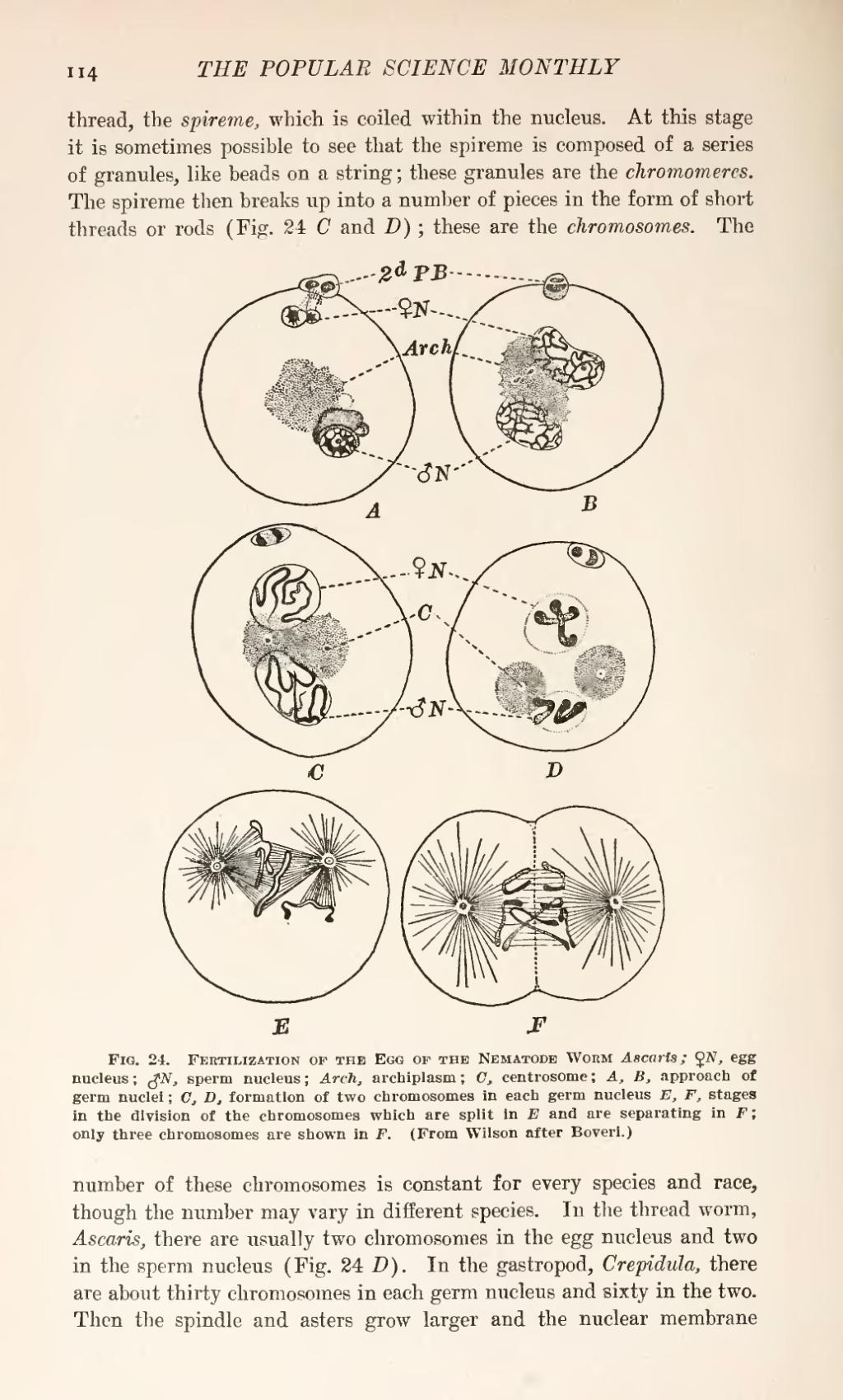thread, the spireme, which is coiled within the nucleus. At this stage it is sometimes possible to see that the spireme is composed of a series of granules, like beads on a string; these granules are the chromomeres. The spireme then breaks up into a number of pieces in the form of short threads or rods (Fig. 24 C and D); these are the chromosomes. The
Fig. 24. Fertilization of the Egg of the Nematode Worm Ascaris; ♀N, egg nucleus; ♂N, sperm nucleus; Arch, archiplasm; C, centrosome; A, B, approach of germ nuclei; C, D, formation of two chromosomes in each germ nucleus E, F, stages in the division of the chromosomes which are split in E and are separating in F; only three chromosomes are shown in F. (From Wilson after Boveri.)
number of these chromosomes is constant for every species and race, though the number may vary in different species. In the thread worm, Ascaris, there are usually two chromosomes in the egg nucleus and two in the sperm nucleus (Fig. 24 D). In the gastropod, Crepidula, there are about thirty chromosomes in each germ nucleus and sixty in the two. Then the spindle and asters grow larger and the nuclear membrane

